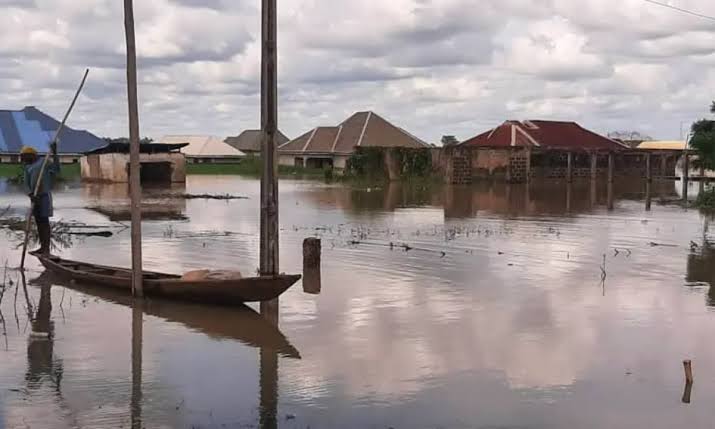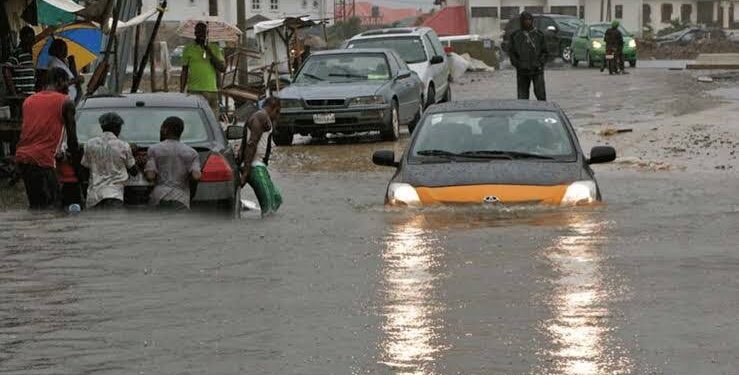Following the recent flooding in Maiduguri, the Minister of Water Resources and Sanitation, Joseph Utsev, has issued a warning of another potential flooding event. This new threat stems from the overflow of the Niger and Benue rivers, with a large volume of water currently flowing towards the Niger Delta region. The minister emphasized the importance of vigilance and proactive measures to mitigate future flooding risks in southern Nigeria.
The Maiduguri Flooding: Causes and Impact
At a press briefing in Abuja on Friday, the minister discussed the recent flood disaster that devastated Maiduguri and Jere in Borno State. He attributed the flooding primarily to the overflow of water from the Alau Dam, located 10 kilometers from Maiduguri’s city center.
The excessive water inflow from the Ngadda River, a key tributary of the River Yedzaram, contributed significantly to the disaster.
Minister Utsev also referred to the 2024 Annual Flood Outlook report by the Nigeria Hydrological Services Agency, which lists 31 states, including Borno, Bauchi, Jigawa, Taraba, Yobe, Benue, and Gombe, as high flood-risk areas.

Government Response and Support
“The Minister of State, Bello Goronyo, and I have visited Maiduguri with officials from various agencies Undergoes my ministry to assess the situation and show solidarity with the Borno State Governor,” said Utsev. He expressed concern over the scale of devastation caused by the flood and offered assurances of the government’s commitment to recovery efforts.
As the flood affects more states, including Yobe, Jigawa, and Bauchi, Utsev highlighted the ongoing efforts to mitigate the damage and provide relief to affected communities.
Growing Concern Over Niger and Benue Rivers
Utsev warned of potential flooding in the Niger and Benue rivers, stating, “The daily flow on these rivers shows a significant rise in water levels, nearing red alert. This is a signal that a large volume of water is moving towards the delta region.”
He urged continued vigilance and enhanced preparedness, particularly in the southern parts of Nigeria, which may soon experience the impacts of river flooding.
National Flood Prevention Strategy
To tackle Nigeria’s perennial flooding issues, the minister referred to the report submitted by the Presidential Committee on the Development of a Strategic Plan for Preventing Flood Disasters in Nigeria. This comprehensive plan outlines ten strategic areas for intervention before, during, and after flood periods.
The report includes recommendations on responsible agencies, expected outcomes, timelines, and costs. In response, President Bola Tinubu has approved ₦108 billion for flood prevention and management across all 36 states.
Call for Proactive Measures
Minister Utsev emphasized the need for state and local governments, as well as stakeholders, to act promptly based on early warning information. “I urge all sub-national governments to heed the flood early warning information from the Ministry and take proactive steps to prevent future flooding,” he said.
He also called for the activation of response measures to alleviate the suffering of citizens impacted by the floods, ensuring that recovery efforts are swift and effective.
Why This Matters
Nigeria’s rainy season often brings devastating floods, affecting millions of citizens, damaging infrastructure, and disrupting livelihoods. With the Niger and Benue rivers showing signs of overflow, there is an urgent need for coordinated disaster management efforts. The government’s proactive stance, backed by significant financial resources, offers hope for more effective flood prevention and relief in the coming months.
Conclusion
With Nigeria facing the dual threats of current and potential flooding, the government’s focus on proactive and coordinated efforts is crucial. The warnings about the Niger and Benue rivers underscore the importance of preparedness in mitigating future disasters. The approved funding for flood prevention provides a critical resource for addressing this challenge across the country.

















